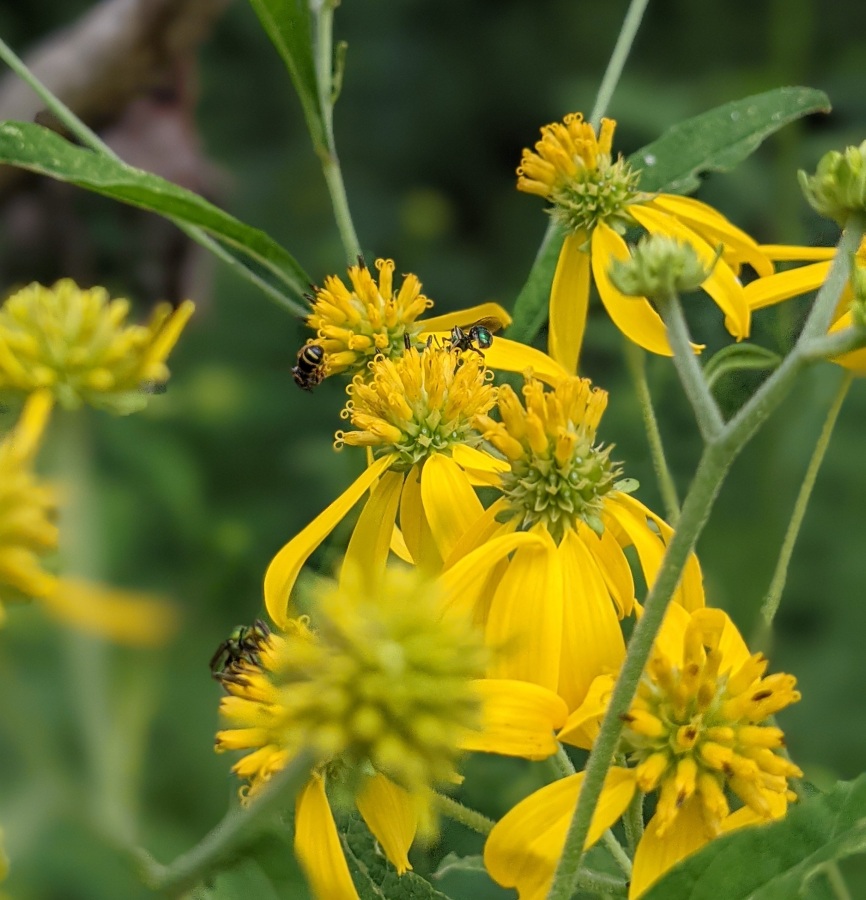
7 August 2021
When wingstem (Verbesina alternifolia) blooms in August, its mop-like flowers reach as high as 8 feet tall. Wingstem often grows in clumps because it spreads by seeds and rhizomes. From a distance it looks ragged (below) but its double-looped pistils and insect pollinators (at top) are worth a closer look.
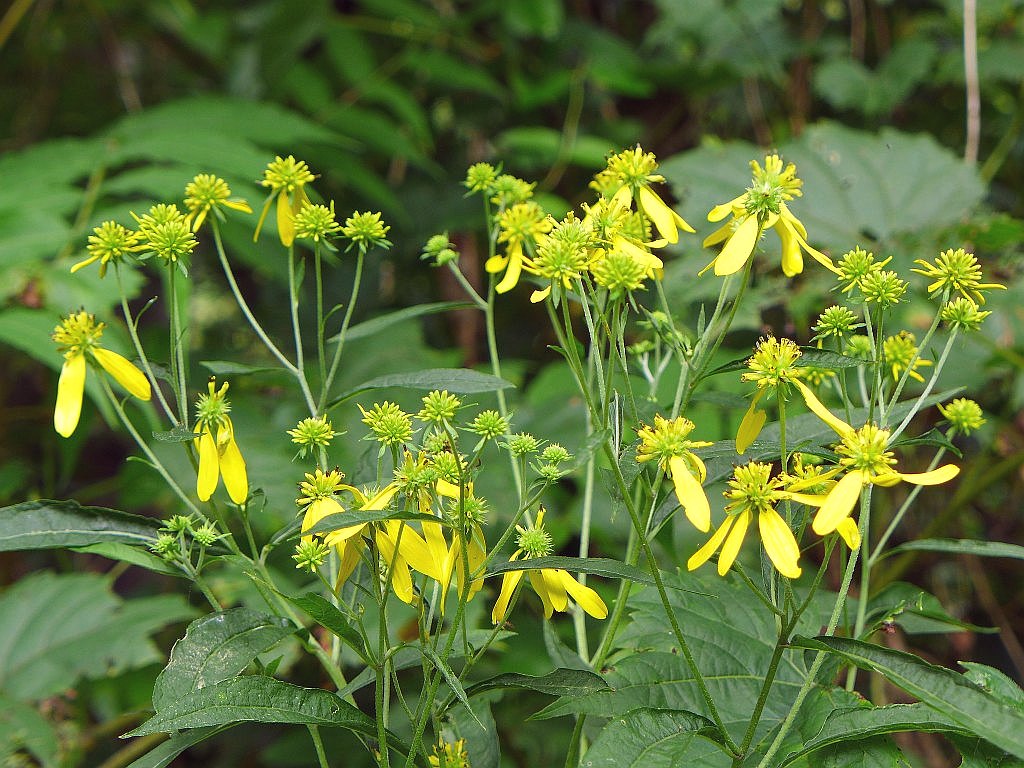
Wingstem takes its common name from the vertical ridges (wings) that run down its stem.
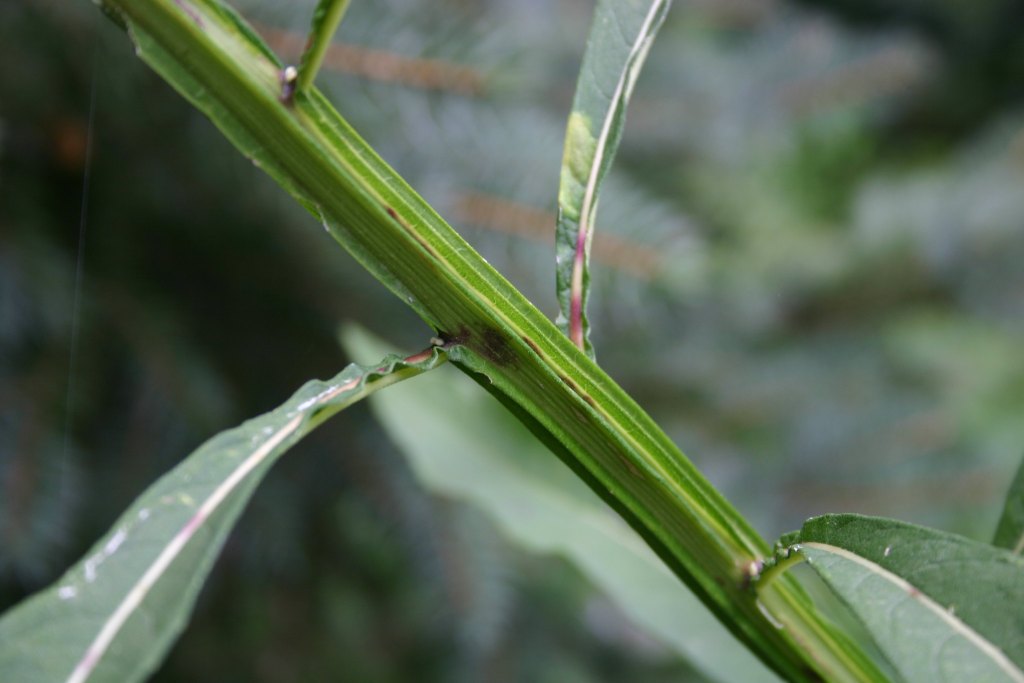
The flower disc resembles a pin cushion topped with brown anthers and yellow double-loop pistils. So far I have not found a floret whose anthers and pistils are protruding simultaneously, but I’ll have to look again.
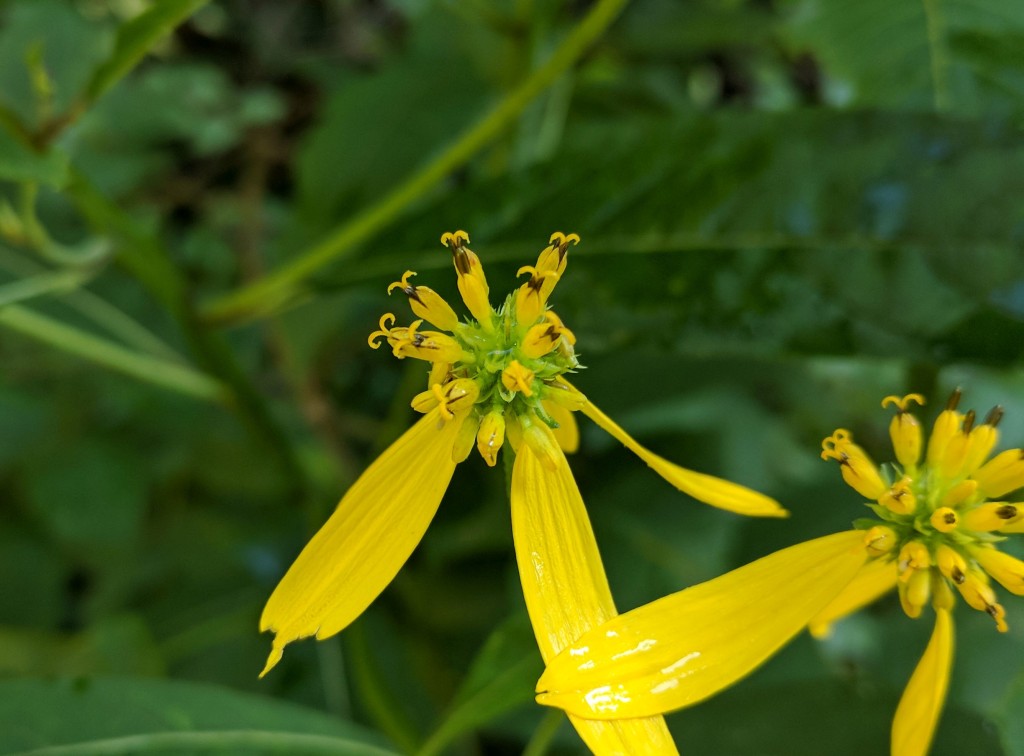
The disc florets are so deep that long-tongued insects such as bees, wasps and butterflies sip the nectar.
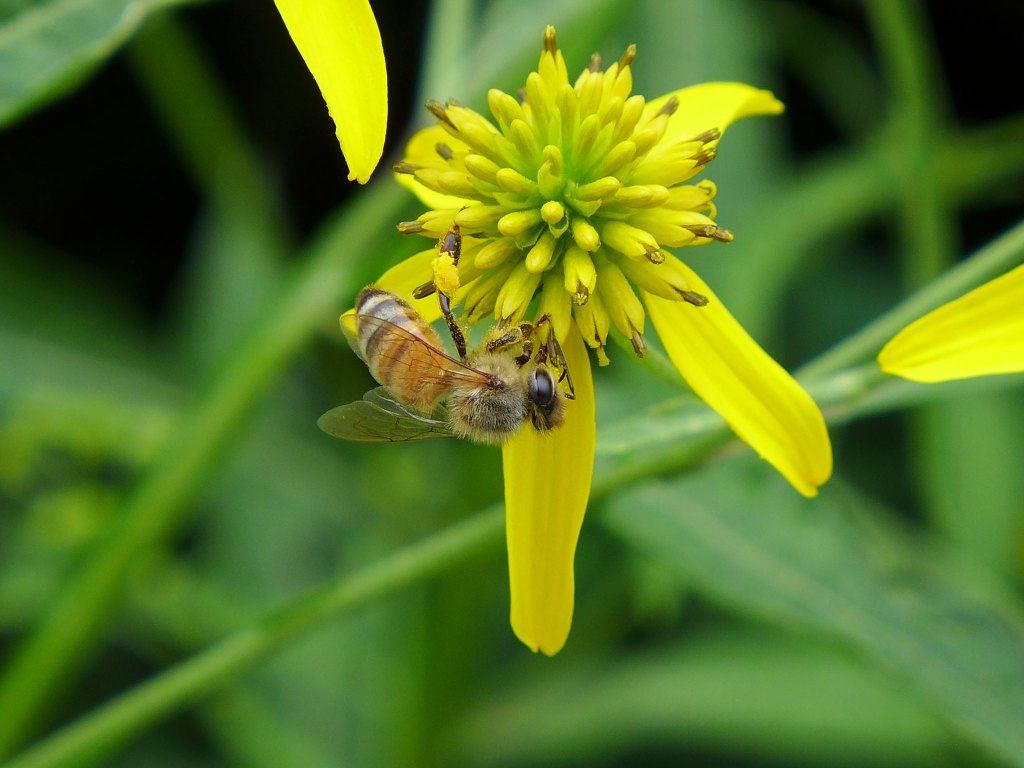
The plant is host to the silvery checkerspot butterfly (Chlosyne nycteis), the gold moth (Basilodes pepita) and a few aphids.
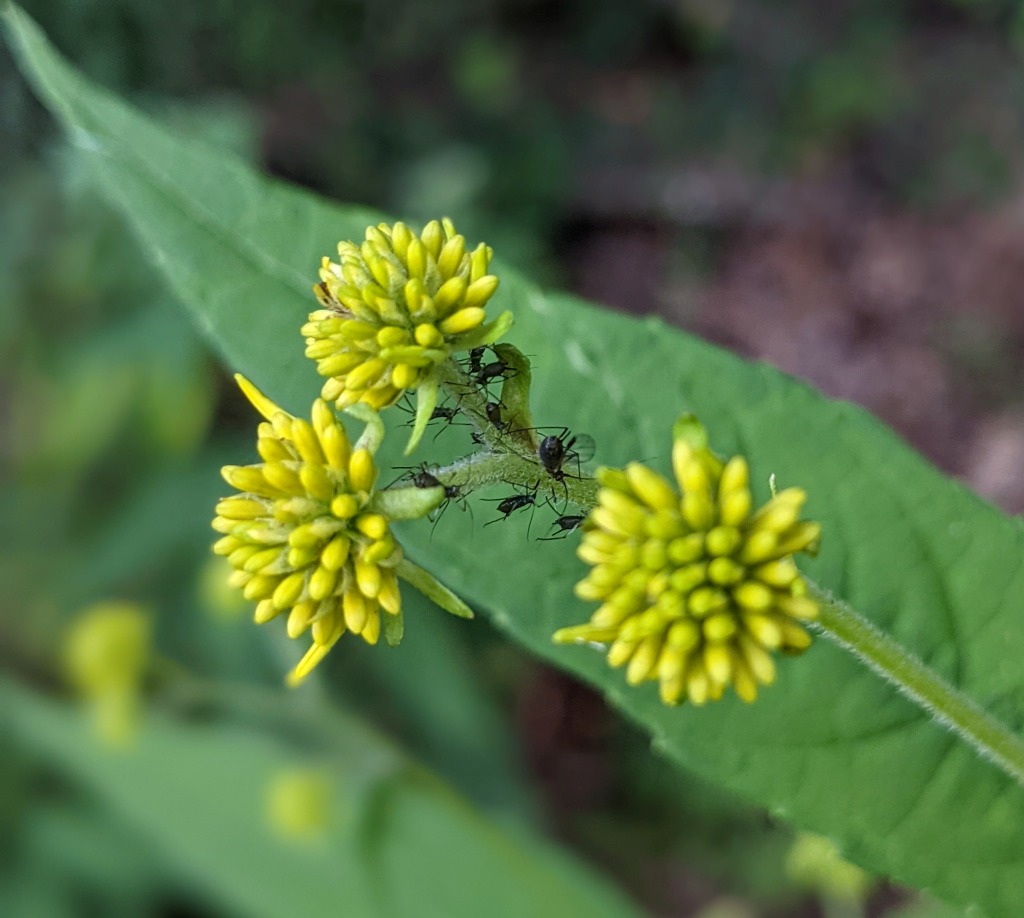
Wingstem is easy to find in southwestern Pennsylvania because its leaves are bitter — deer don’t eat it. There are lots of opportunities this month to give wingstem a closer look.
(photos by Kate St. John)
We have lots of Wingstem along the edge of our woods, and yesterday my husband and I saw a small orange and black butterfly on our deck. It didn’t sit long enough for us to get a picture of it, but I looked up the Silvery Checkerspot and I think that must be what it was. Your timely post helped us ID the butterfly!
Lovely! They are one of my favorite plants that I grow in my garden.